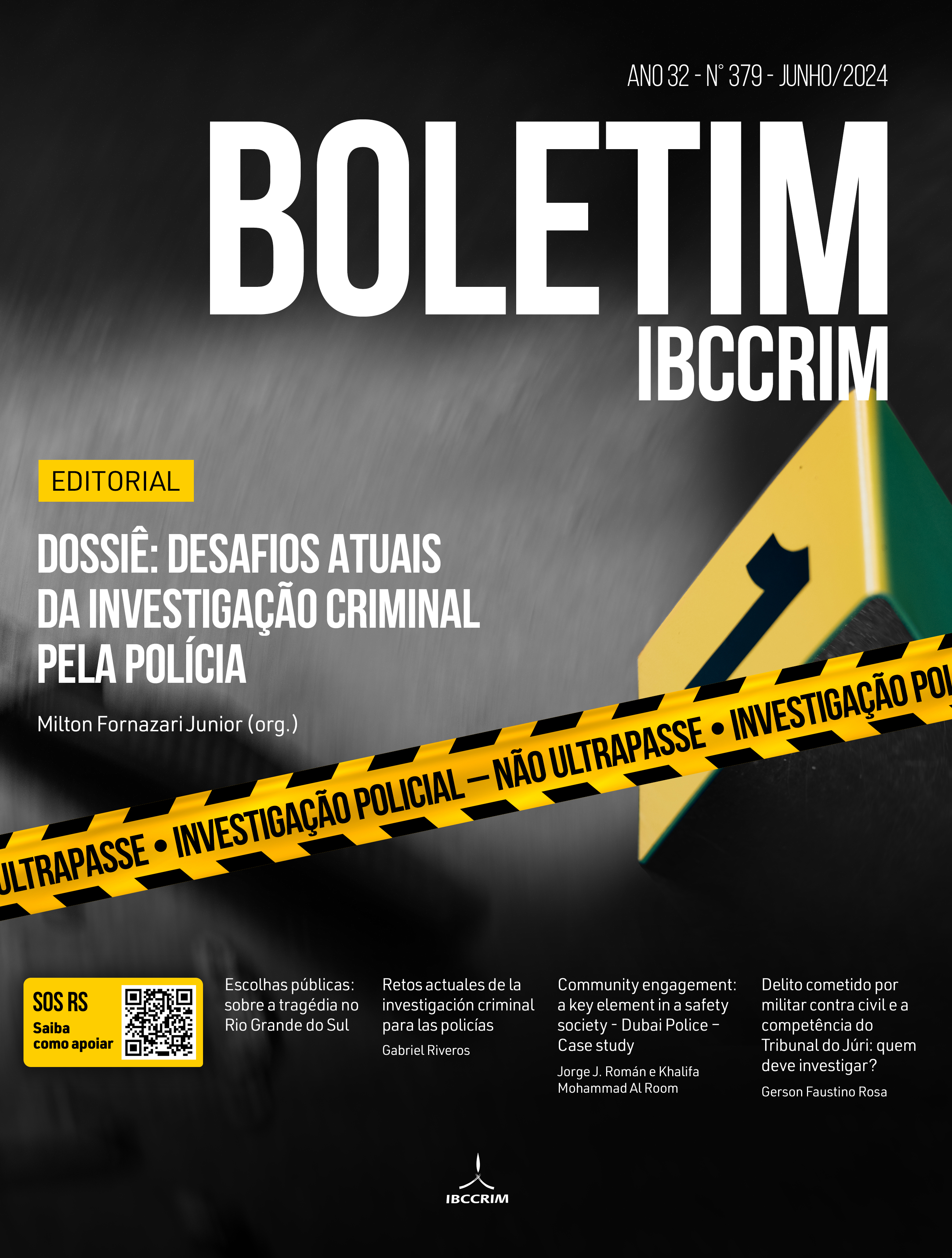Community engagement: a key element in a safety society - Dubai Police - Case study
DOI:
https://doi.org/10.5281/zenodo.11175692Keywords:
Community engagement, Accountability, Public Sector, Dubai PoliceAbstract
The cooperation of the public in Dubai is a key element to prevent crime. In simple terms, the police service would cease to function without the active support of the communities it serves. Evidence has shown that effective community engagement, targeted foot patrols and collaborative problem solving can significantly increase public confidence in policing activity.Policing by consent requires public support for policing activity at every level. The purpose of engagement, as well as the level at which people and communities are to be involved, should be clear. Community engagement produces two main benefits: improved decision- making and enhanced citizenship. The Dubai Police focuses primarily on the decision- making benefit of community engagement and increasing levels of trust, confidence and satisfaction with policing at the individual level. An initiative of community engagement is a critical component of any effective policing activities. It requires that various key players work closely to develop effective programs and initiatives to govern their operations. Effective engagement is more than organizing a meeting with community members. It is a rigorous process that demands sensitivity and careful planning and execution. Since 2000 Dubai Police has been working in different programs to increase the community engagement.
Downloads
References
Bond, B., & Gabriele, K. (2018). Research and planning units: An innovation instrument in the 21st Century police organization. Criminal Justice Policy Review, 29, 67–88.
Blaug R, Horner L and Lekhi R. (2006) Public Value, Citizen Expectations and User Commitment, London, The Work Foundation
Cameron K, & Ettington D. (1988), “The conceptual foundations of organizational culture”, In John Smart (Ed.) Higher Education: Handbook of Theory and Research, New York: Agathon, pp. 356- 396.
Chan, J. (2001). The Technology game: How information technology is transforming police practice. Journal of Criminal Justice, 1, 139-159.
College of Policing. (2013). Engagement and communication. Retrieved from https://www.app.college.police.uk/app-content/engagement- andcommunication/engaging-with-communities
Docobo, J. (2005). Community policing as the primary prevention strategy for homeland security at the local law enforcement level. Homeland Security Affairs, 14 (4). Retrieved from https://www.hsaj.org/articles/183
Emsley C., Clive H., Reinke, H. and Lévy R. (1994) Les polices au XIXe et XXe siècles: Aperçus sur les historiographies anglaise, allemande et française/ Overview of English, German and French Police History Cahiers de la Sécurité Intérieure, IHESI, Paris, No.17, 13-33.
Gallup, (2019) Global Law and Order Report International Index. Gallup USA Inc.
Hauser, J., Tellis, G. & Griffin, A. (2006). Research on innovation: a review and agenda for marketing science. Marketing Science, 25, 687–717
Hollywood J, & Winkelman Z. (2015). Improving Information-Sharing Across Law Enforcement: Why Can’t We Know? National Criminal Justice Reference Service.
Lersch, K., & Mieczkowski, T. (2005). Violent police behavior: Past, present, and future research directions. Aggression and Violent Behaviour, 10, 552–568.
Maxwell, J. (2008). Designing a qualitative study. The Sage handbook of applied social research methods: 214-253.
Matt, C., Hess, T., Benlian, A. (2015). Digital transformation strategies. Bus. Inf. Syst.
Eng.57(5),339–343. https://doi.org/10.1007/s12599-015-0401-5
Metropolitan Police (2009) Metropolitan Police Authority and Metropolitan Police Service Community Engagement Strategy 2006 – 2009, UK
Moore, M., Sparrow, M. and Spelman W. (1997). “Innovations in policing: from production lines to job shops” in Altshuler, A. and Behn, R, (Eds), Innovation in American Government.
Myhill A., (2012). Community Engagement in Policing: Lessons from the Literature. Retrieved from https://whatworks.college.police.uk/Research/Doc uments/Community_engagement_lessons.pdf
Lemon, K.,& Verhoef, P. (2016). Understanding customer experience throughhout the customer journey. Journal of Marketing, 80(6), 69-96
Peed, C. R. 2008. ‘The Community-Policing Umbrella.’ FBI Law Enforcement Bulletin, p.
https://leb.fbi.gov (retrieved 19 September 2020)
Pillay, R. & Morris, M. (2016). Changing healthcare by changing the education of its leaders: An innovation competence model. Journal of Health Administration Education, 33, 393–410.
Reichert, K. (2001). Use of information technology by law enforcement. Promising Approaches to Addressing Crime Series. University of Pennsylvania, Jerry Lee Center of Criminology, Forum on Crime and Justice.
Roberts, N. & King, P. (1996). Transforming public policy: Dynamics of policy entrepreneurship and innovation, San Francisco, CA: Jossey-Bass Incorporated Pub.
Román, J. (2019). Smart Police Station, Case Study. The Quality Management Forum, Quality Management Division. American Society for Quality. Volume 45, Number 1
Ruteere, M. and Pommerolle, M. (2003) ‘Democratizing Security or Decentralizing Repression? The Ambiguities of Community Policing in Kenya’, African Affairs pp.587-604
Skolnick J. & Bayley D. (1988). Community Policing: Issues and Practices Around the World, Washington, D.C.: Government Printing Office.
Skogan, W. G. and Steiner, L. (2004). Community Policing in Chicago Year Ten: An Evaluation of Chicago’s Alternative Policing Strategy. Chicago: Illinois Criminal Justice Information Services
Yin, R. (2009) Case Study Research: Design and Methods. SAGE Publications Ltd: London
Yin, R. (2011). Applications of case study research. Sage publications.
Yin, R. (2013). Case study research: Design and methods. Sage publications.
Downloads
Published
How to Cite
Issue
Section
License
Copyright (c) 2024 Jorge J. Román, Khalifa Al Room

This work is licensed under a Creative Commons Attribution-NonCommercial 4.0 International License.
Copyright of published articles belongs to the author, but with journal rights over the first publication and respecting the one-year exclusivity period. Authors may only use the same results in other publications by clearly indicating this journal as the medium of the original publication. If there is no such indication, it will be considered a situation of self-plagiarism.
Therefore, the reproduction, total or partial, of the articles published here is subject to the express mention of the origin of its publication in this journal, citing the volume and number of this publication. For legal purposes, the source of the original publication must be consigned, in addition to the DOI link for cross-reference (if any).












